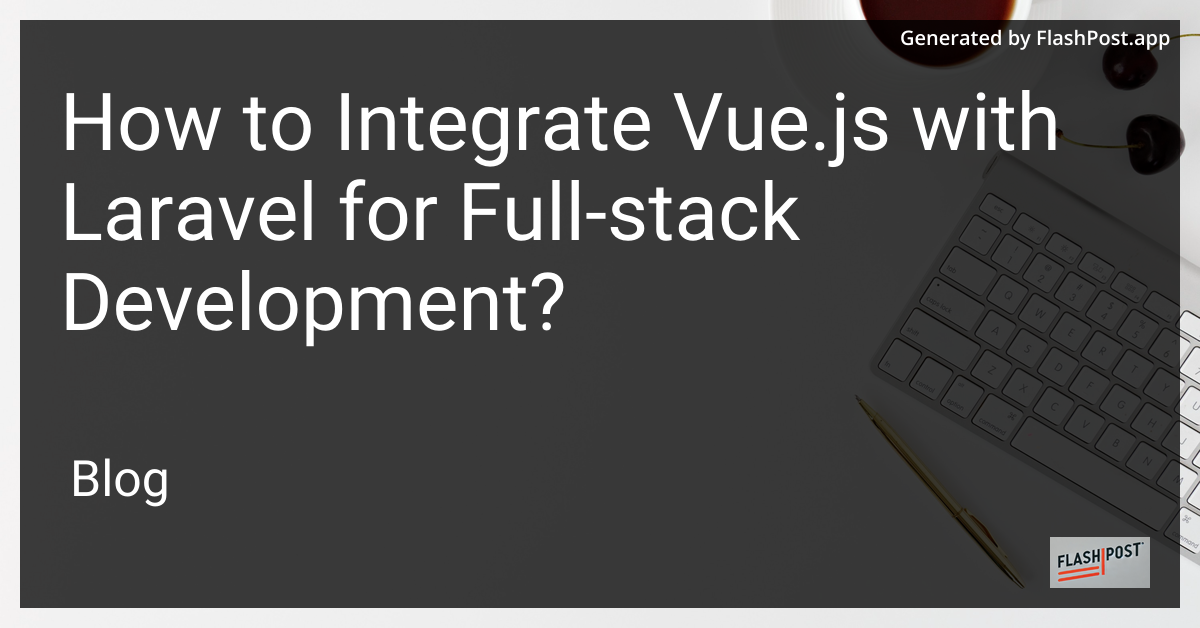How to Integrate Vue.js with Laravel for Full-Stack Development
Integrating Vue.js with Laravel can create a powerful full-stack development environment. With Vue.js as the frontend framework and Laravel as the backend, developers enjoy a modern and efficient workflow. In this guide, we'll explore how you can seamlessly integrate Vue.js with Laravel to build robust applications.
Setting Up the Development Environment
To get started, you need to set up a Laravel project if you haven't done so. Run the following command to create a new Laravel project:
composer create-project --prefer-dist laravel/laravel vue-laravel-appOnce your Laravel project is ready, navigate to the project directory:
cd vue-laravel-appIntegrating Vue.js
Laravel comes with built-in support for Vue.js. To install Node.js dependencies, use npm:
npm installNext, you need to import Vue into your resources/js/app.js file:
import Vue from 'vue';Create your first Vue component within the resources/js/components directory and modify your app.js to register the component:
Vue.component('example-component', require('./components/ExampleComponent.vue').default);Compile your assets with:
npm run devServing the Application
Start the Laravel development server using the following Artisan command:
php artisan serveVisit localhost:8000 and you should see your Vue component rendered in the browser.
Best Practices
When developing a full-stack application using Vue.js and Laravel, consider the following best practices:
- Ensure Vue.js security by following authentication and authorization guidelines.
- Perform Vue.js input validation to manage user input effectively.
- Learn more about displaying value in Vue.js.
- Adopt best practices for Vue.js testing to ensure robust application performance.
- Handle Vue.js file upload efficiently.
